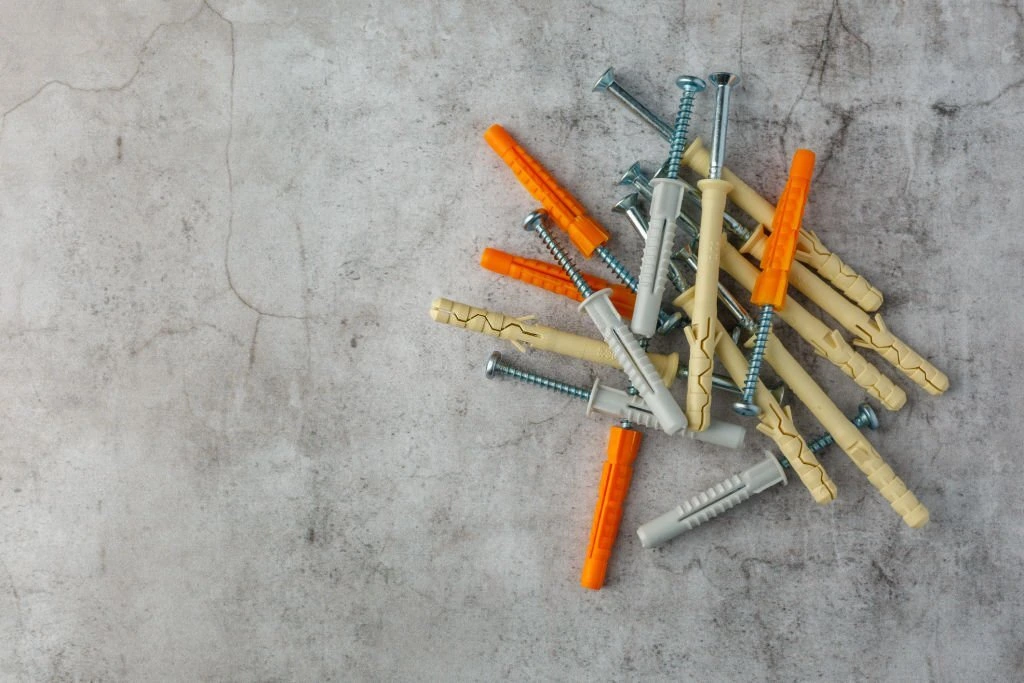Drywall anchors are typically simple to install and may sustain heavy and light loads. However, it’s not as easy as just turning around to remove drywall anchors.
Wall anchors are only used when you can’t accurately target a wall stud, despite how useful and durable they are.
You might simply state that the greatest wall anchors are the most difficult to remove since their only purpose is to cling on with all of their power.
When it comes time to remove a wall anchor, whether you used toggle bolts, molly bolts, or drywall anchors, you will need to understand how to seal the holes and minimise drywall damage.
But do not worry! You can learn to do it securely and without inflicting more harm with a little bit of knowledge.
Each kind of wall fastener may be removed and repaired using a different technique. It’s crucial to be aware of your alternatives depending on the anchor you’re using.
We’ll also provide advice on how to recess a wall anchor for a finish that will be unquestionably superior if it looks like a lost struggle.
Recommended: 5 Ways to Immediately Spot A Slab Leak In Your Home
With Needle-Nose Pliers, Pull It | Method 1
Conical-shaped objects that are tapped into your walls often represent plastic or steel drywall anchors.
These anchors, as opposed to molly and anchor bolts that connect to the drywall’s reverse, may often be carefully removed with skill and elegance.
Remove any screws that may still be in place on the wall anchor first.
Then, grasp the collar or head of the drywall anchor and wriggle and pull on it while maintaining a tight hold on the inner edge of the wall anchor using needle-nose pliers.
As you test how easily it will go within the drywall hole, use your best judgement. It’s possible that it will eventually slip out from flush with the drywall.
Pulling on the anchor can worsen the situation if it is deeply buried and doesn’t appear to be releasing from the drywall easily. If so, continue reading since there are still more choices.
You can also visit Globlar.com for more news & updates!
To Remove It, Use A Screwdriver OR A Drill | Method 1
You may use a screwdriver as a counters crew bit if your plastic or metal drywall anchor is deeply entrenched.
To ensure a solid hold, use a screwdriver that fits snugly into the anchor and give it one more hammer blow.
You may sometimes “unscrew” the drywall anchor by applying pressure and turning the screwdriver in the other direction so you can grasp the edge using needle-nose pliers.
Use a drill to partially withdraw the molly bolt before removing it. Tap the bolt head back until it is flush with the wall to release the barrel.
By doing so, the barrel behind the wall will be extended, releasing its hold. You may remove the whole molly bolt from the wall using needle-nose pliers.
By using a drill to loosen the bolt from the toggle, toggle bolts may be simply and damage-free removed from a wall. Since the toggle is spring-loaded, it cannot be folded to pass through the wall hole again.
To give the toggle some traction against the gypsum board’s reverse, gently pull on the bolt’s head. You will hear the toggle fall between the studs as soon as it separates from the bolt.
If you buy a new toggle for the bolt, it may be used again.
Here, Multiplextimes.com is providing amazing information to our readers!
Pull Back The Anchor (or Push It Through the Wall) | Method 3
If using pliers to remove the wall anchor or a counters crew bit to remove it from its hole is not possible, try pushing it in even deeper.
You must cut off the wall anchor’s head if it is protruding from the wall and covering paint. The top layer of drywall holding on to the anchor’s lip may need to be gently sliced away using a utility blade.
In comparison to tearing the anchor out of its hole, a sharp blade does less damage.
Additionally, after the anchor’s head is out of the way, you will be filling the hole. If the anchor is protruding out far enough, you may also be able to clip the edge off of it without damaging the drywall.
The utility blade works well for plastic anchors, but you may need to use a drill’s cutting wheel attachment for metal anchors.
Put a tiny screwdriver into the hole and hit the end with a hammer to push the wall anchor further after it is no longer overhanging the drywall.
Depending on the sort of anchor you’re recessing, you may be able to drop it into the area behind the drywall (and some of it may even fall back there already).
If you want the anchor to remain concealed once the hole is fixed, you may leave it recessed into the drywall.
Fill In The Hole
After the anchor has been taken out or recessed, the drywall will need to be patched.
To make the area level and smooth, push any protruding drywall edges that are near the hole inwards or use the utility blade to smooth them out.
After that, apply a coat of drywall compound using a spackling knife. Butter the compound into the hole using the knife’s flat edges.
After in doubt, keep your coating of drywall compound thick so it can be readily sanded when it is dry. Be cautious not to dig into the hole with the knife.
After allowing the compound to cure for the night, lightly sand the refinished surface using 220-grit sandpaper. With a towel, remove any dust, then touch up the paint on the wall.
